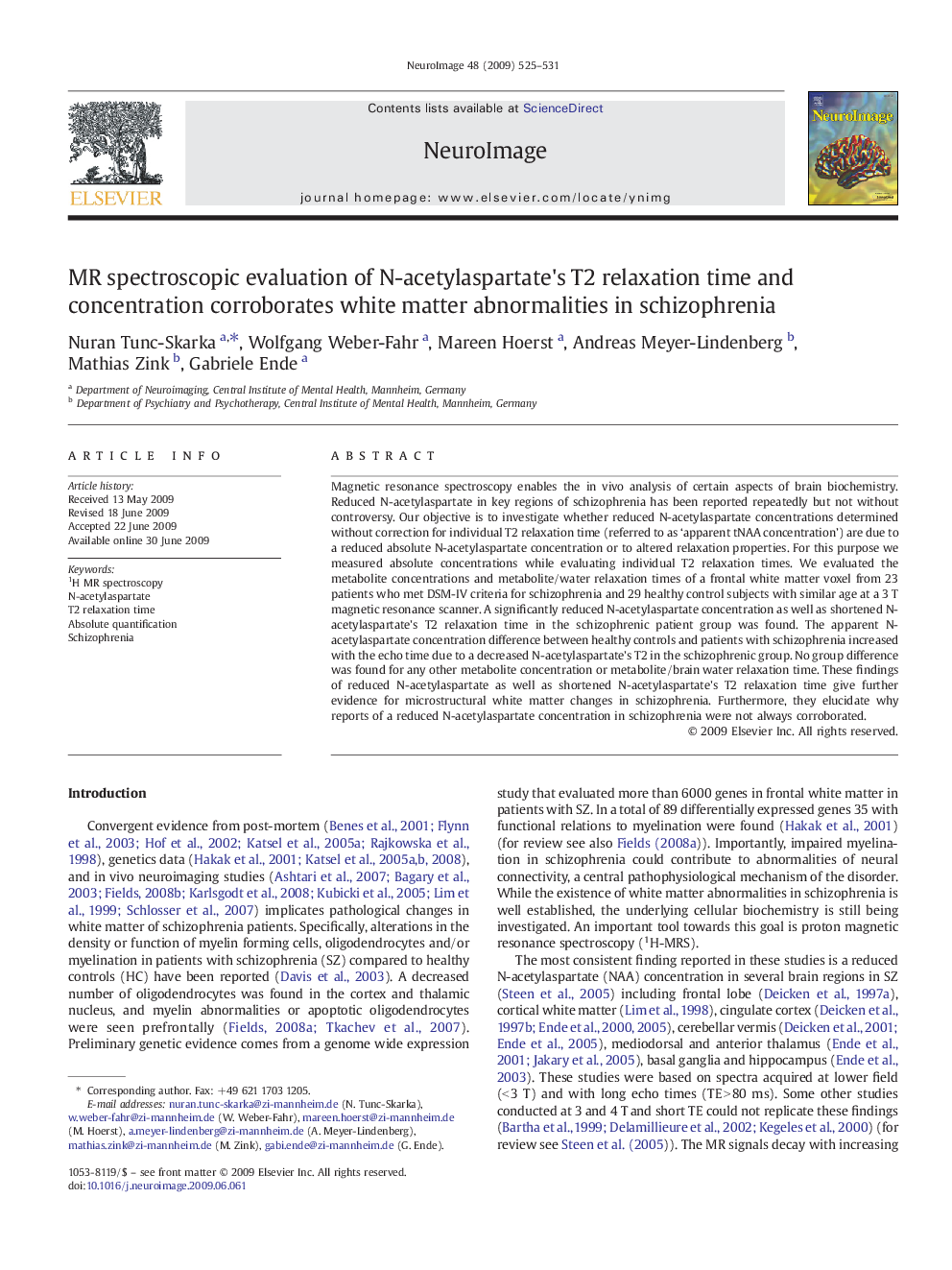| Article ID | Journal | Published Year | Pages | File Type |
|---|---|---|---|---|
| 3072330 | NeuroImage | 2009 | 7 Pages |
Magnetic resonance spectroscopy enables the in vivo analysis of certain aspects of brain biochemistry. Reduced N-acetylaspartate in key regions of schizophrenia has been reported repeatedly but not without controversy. Our objective is to investigate whether reduced N-acetylaspartate concentrations determined without correction for individual T2 relaxation time (referred to as ‘apparent tNAA concentration’) are due to a reduced absolute N-acetylaspartate concentration or to altered relaxation properties. For this purpose we measured absolute concentrations while evaluating individual T2 relaxation times. We evaluated the metabolite concentrations and metabolite/water relaxation times of a frontal white matter voxel from 23 patients who met DSM-IV criteria for schizophrenia and 29 healthy control subjects with similar age at a 3 T magnetic resonance scanner. A significantly reduced N-acetylaspartate concentration as well as shortened N-acetylaspartate's T2 relaxation time in the schizophrenic patient group was found. The apparent N-acetylaspartate concentration difference between healthy controls and patients with schizophrenia increased with the echo time due to a decreased N-acetylaspartate's T2 in the schizophrenic group. No group difference was found for any other metabolite concentration or metabolite/brain water relaxation time. These findings of reduced N-acetylaspartate as well as shortened N-acetylaspartate's T2 relaxation time give further evidence for microstructural white matter changes in schizophrenia. Furthermore, they elucidate why reports of a reduced N-acetylaspartate concentration in schizophrenia were not always corroborated.
